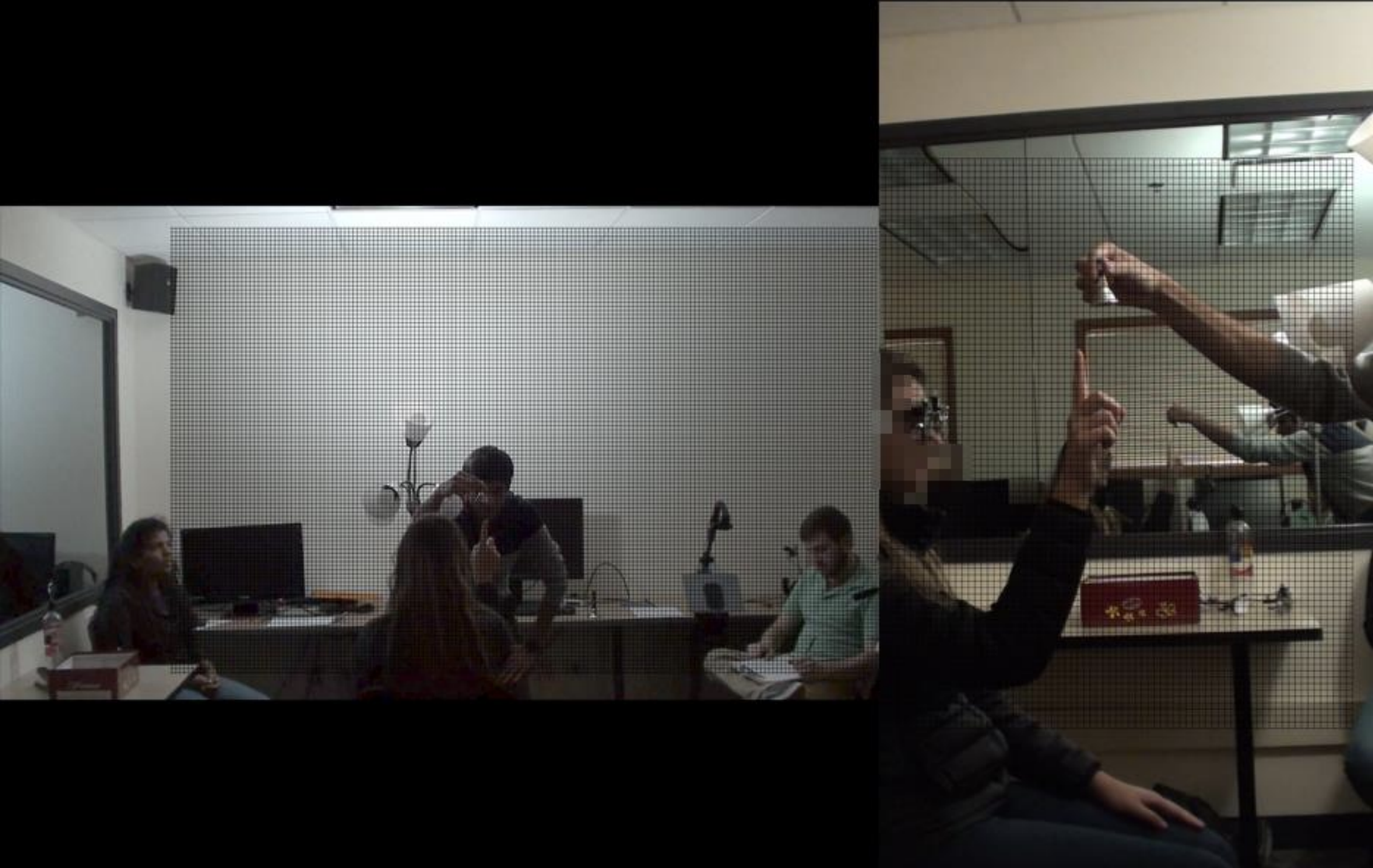Abstract
Preliminary evidence from a larger study is presented demonstrating that non-image-forming retinal processing takes place even through closed eyelids. The Z-bell℠ test, which has been in clinical use for more than twenty years shows that these processing channels affect how we perceive context in the space around us when forming visual imagery. By using therapeutic eyeglasses and pitched bells, we can measure changes in a subject’s spatial processing, and remediate deficiencies among non-image-forming neural channels that operate in even the low-light conditions produced by closed eyelids. Using what we know of both the top-down feedback filtering of retinal input triggered purely by aural signals and also the characteristic difficulties that brain-injured patients have in organizing visual scenes (which the Z-bell℠ test links to difficulties with non-image-forming retinal processing), it is argued that the non-image-forming retinal channels demonstrated in this study may be critical in any human-centric model of computer vision. Spatial coding as a basis for human cognition is also briefly discussed.
Authors: Clark Elliott, Cynthia Putnam, Deborah Zelinsky, Daniel Spinner, Silpa Vipparti, and Abhinit Parelkar © 2019AI Summary
The document appears to be an academic paper by Clark Elliott and colleagues, including Dr. Deborah Zelinsky, on the Z-bell℠ test and its role in remediating spatial deficiencies in non-image-forming retinal processing.
Who is this for?
This article is valuable for patients with persistent symptoms like concussions, TBIs, migraines, dizziness, and light sensitivity, helping them understand how non-image-forming retinal processing affects spatial perception. It provides insight into retinal neuromodulation, such as the Z-Bell℠ Test, as a treatment for neurological issues. Caregivers and advocates for those with learning disabilities, autism, or post-concussion syndrome can use this to support neuro-optometric care. Healthcare professionals, including neuro-optometrists, neurologists, and rehabilitation specialists, as well as researchers in vision science and human-computer interaction, will find its exploration of retinal processing and sensory integration highly relevant.
Key Points
The Z-bell℠ test has been used clinically for over twenty years to assess and modulate non-image-forming retinal processing.
Preliminary evidence from a larger study suggests that retinal processing occurs even through closed eyelids, indicating deeper neural connections beyond simple image formation.
The study examines how non-image retinal channels affect spatial perception and contextual awareness.
Authors from DePaul University and the Mind-Eye Institute collaborated on this research, highlighting the interdisciplinary approach between cognitive science and optometric interventions.
The research supports the idea that retinal neuromodulation techniques can be used to improve sensory integration in individuals with neurological impairments.
Real Patient Application
Artificial intelligence expert, Clark Elliott PhD, who struggled with symptoms of traumatic brain injury for eight years following a car crash was able to be “put back together again” in steps, with remarkable progress in the first month, thanks to the efforts of two professional women — a neuroscientist and an optometrist using advanced neuro-optometric rehabilitation.
Interested in learning more?
At the Mind-Eye Institute we understand that interactions between the electrical and biochemical pathways in the brain affect physical, physiological and psychological systems. Visual interventions that alter retinal signaling pathways impact both the electrical and biochemical systems.
To learn about next steps for registering as a patient or registering a child as a patient, please call the Mind-Eye Institute office at 847.558.7817 or you can fill out our online New Patient Inquiry Form provided here.


